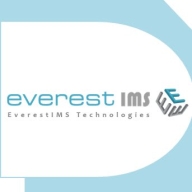

Amazon CloudWatch and Infraon IMS compete in infrastructure and application monitoring. Infraon IMS has an edge in role-based dashboards and granular monitoring, while Amazon CloudWatch benefits from seamless integration with AWS services.
Features: Amazon CloudWatch offers real-time data collection, alarm setup, and robust task automation. It integrates seamlessly with other AWS services, making it ideal for monitoring AWS infrastructure. Infraon IMS provides real-time network monitoring dashboards, high configurability, and role-based dashboards that align with specific business needs, providing significant granularity.
Room for Improvement: Amazon CloudWatch could improve its dashboard drill-down capabilities and integration with non-AWS services for better application monitoring, along with more effective visualization tools. Infraon IMS would benefit from enhanced AI capabilities for predictive insights and a more user-friendly GUI. Better integration with other security tools could also enhance its competitive standing.
Ease of Deployment and Customer Service: Amazon CloudWatch operates mainly on public cloud environments, offering flexible and scalable options with support that varies by package, though it can be costly. Infraon IMS typically runs on-premises or hybrid clouds, providing managed deployments. While CloudWatch benefits from AWS integration, Infraon’s traditional deployment style attracts those favoring on-premises reliability.
Pricing and ROI: Amazon CloudWatch uses a pay-as-you-go pricing model, which can become expensive with large data volumes, and its ROI emerges from reduced manual monitoring efforts. Infraon IMS is noted for its flexible pricing structures, including specific licensing arrangements, leading to more predictable expenses and ROI tied to its customization options.
| Product | Market Share (%) |
|---|---|
| Amazon CloudWatch | 2.3% |
| Infraon IMS | 0.4% |
| Other | 97.3% |


| Company Size | Count |
|---|---|
| Small Business | 17 |
| Midsize Enterprise | 9 |
| Large Enterprise | 24 |
| Company Size | Count |
|---|---|
| Small Business | 3 |
| Midsize Enterprise | 2 |
| Large Enterprise | 3 |
Amazon CloudWatch integrates seamlessly with AWS, providing real-time monitoring and alerting features. Its interface supports task automation, enhancing troubleshooting and analytics capabilities, while offering strong security and scalability at a cost-effective rate.
Amazon CloudWatch is an impactful platform for monitoring AWS resources and managing application performance. It simplifies infrastructure performance monitoring by providing comprehensive analytics capabilities, including application insights and event scheduling. Users appreciate CloudWatch for its detailed metrics, dashboards, and support in issuing alerts to detect anomalies. It efficiently tracks performance, optimizes resource utilization, and ensures service availability. CloudWatch is recognized for its robust alerting features and integration with other AWS services, further supporting its resource monitoring capabilities. However, there is room for improvement in dashboard customization, log streaming speed, and integration with non-AWS services. Enhancements in API integration, machine learning features, and support for third-party tools are also desired.
What features does Amazon CloudWatch offer?Industries implementing Amazon CloudWatch often focus on optimizing IT infrastructure. Companies in sectors like finance and e-commerce rely on its monitoring and alerting capabilities to ensure service uptime and performance. The platform's automation and analytics features empower teams to proactively manage performance and detect potential issues promptly.
Infraon IMS offers network monitoring with real-time dashboards, customizable GUIs, and integrated tools, supporting device management and workflow automation efficiently.
Infraon IMS delivers stable performance with features tailored for easy customization and detailed network management. Users benefit from real-time monitoring through role-based dashboards and integrated ticketing tools. However, improvements in reporting, GUI usability, and AI integration are needed. Challenges include monitoring non-IPBS devices and improving connectivity visibility. Users require seamless Infraon Desk integration, ease of device addition, and enhanced topology views.
What are the key features of Infraon IMS?In industries like IT infrastructure and data center management, Infraon IMS is utilized for network monitoring and managing key components such as leased lines and firewalls. Its capabilities aid diverse geographical locations in overseeing data centers, offering centralized monitoring and access to critical infrastructure.
We monitor all Cloud Monitoring Software reviews to prevent fraudulent reviews and keep review quality high. We do not post reviews by company employees or direct competitors. We validate each review for authenticity via cross-reference with LinkedIn, and personal follow-up with the reviewer when necessary.